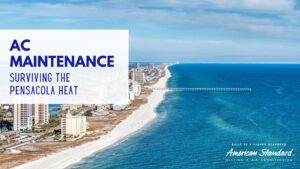 When it comes time to replace your home’s air conditioning system, you will have several choices as to the type compressor your new unit is equipped with. There are standard single stage compressors, two-stage compressors and multi-stage compressors. What is the difference, and how does a multi-stage compressor work?
When it comes time to replace your home’s air conditioning system, you will have several choices as to the type compressor your new unit is equipped with. There are standard single stage compressors, two-stage compressors and multi-stage compressors. What is the difference, and how does a multi-stage compressor work?
The good news about standard one-stage compressors is that they deliver 100-percent output. The bad news is they do it all the time. Most of the time, your home’s cooling load doesn’t require full compressor output, and it’s a waste of energy. A single stage compressor will either be running full-throttle, or it will not be running at all.
Two-stage systems feature two compressor speeds, with one often set at 60 to 70 percent of the maximum. Roughly 80 percent of the time, the system runs at the lower speed, but on the hottest days, it switches to a higher speed to beat the heat. Since they are usually running at a lower speed, they tend to run for long periods, minimizing the starts and stops that burn up energy.
Multistage compressors run nearly continuously at approximately 80-percent output in most conditions, automatically escalating to full output only when acute temperatures demand it.
A compressor operating at lower output consumes less electricity. In addition, multistage compressors run much longer “on” cycles than one-stage units, which cycle on and off more frequently. This also contributes to increased efficiency because single-stage compressors draw excess electricity each time they must restart after cycling off. Fewer “off” cycles and restarts means reduced energy consumption.
More continuous operation at lower output results in increased interior comfort. Temperature spikes in living spaces often occur during the “off” cycles of standard one-stage compressors. Because multistage units operate most of the time, these temperature gains are minimized, and climate control is more consistent. Humidity extraction, a critical comfort function of air conditioners, also is optimized by continuous operation at 80-percent output versus the frequent on/off cycles of full output, single-stage compressors.
When your AC system needs some TLC, give Shannon’s Heating and Cooling a call at 850-698-3101 , or email us at [email protected]. Shannon’s Heating and Cooling is a licensed and insured HVAC contractor in serving Pensacola, FL and the surrounding area.











